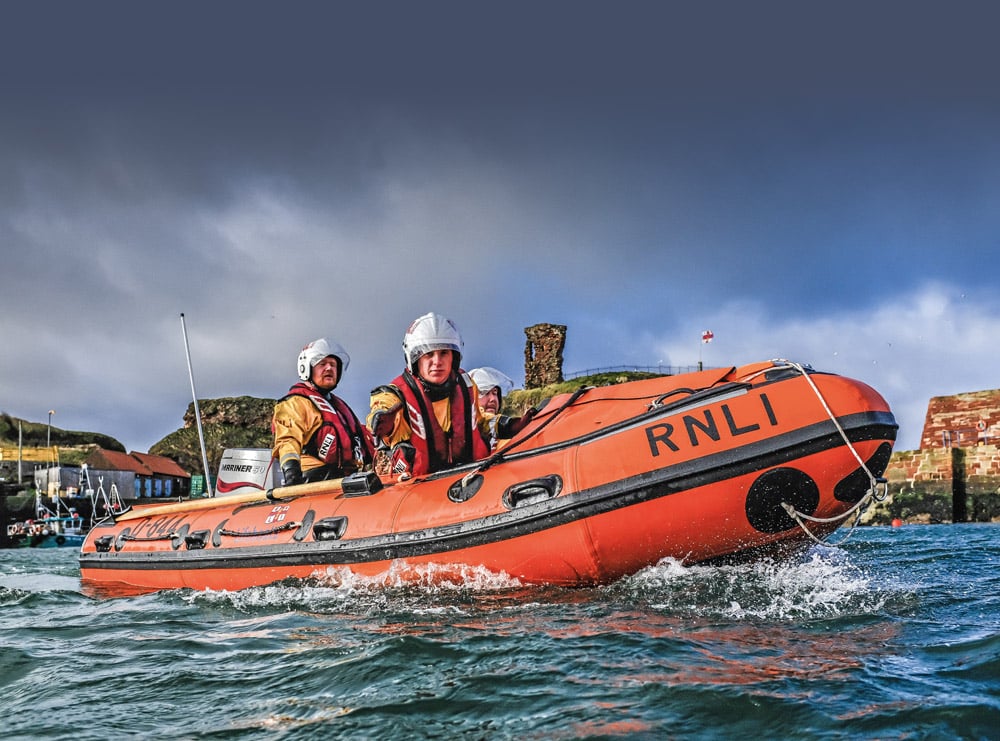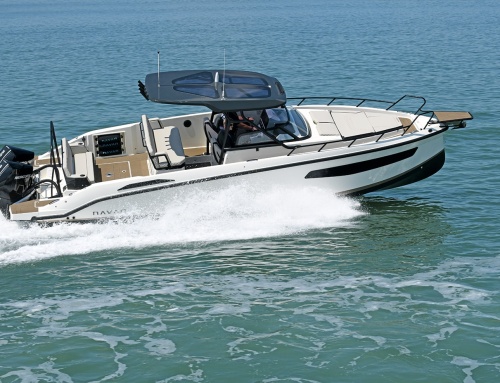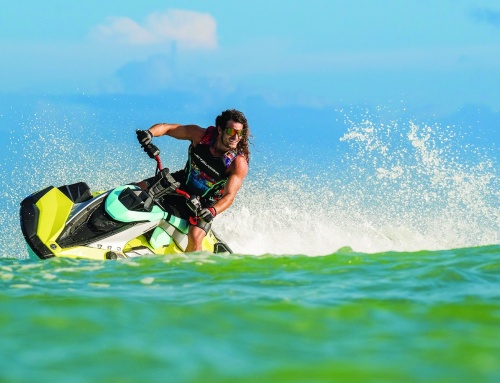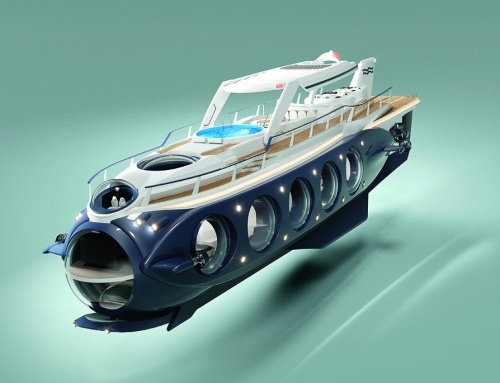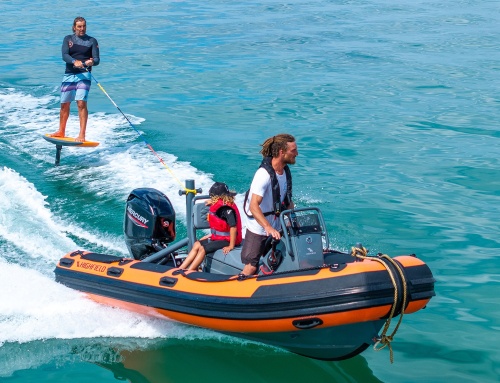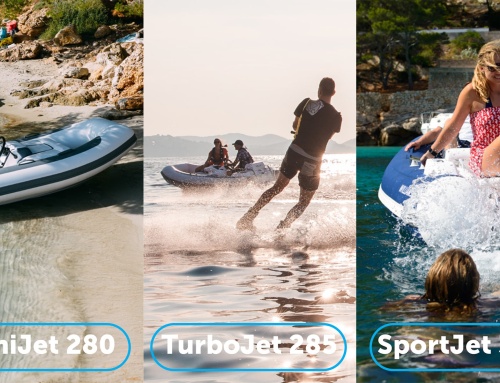Introduced in 1963, the inshore lifeboat continues to be an invaluable asset in the RNLI’s fleet, as new figures show these craft have saved 30,778 lives to date over the last 60 years.
The humble inflatable boat, a form of craft born largely out of the tiny lifesaving dinghies supplied to British aircraft crews during the Second World War, can credit its continued development to the likes of the pioneering Doctor Bombard, the mass popularity afforded it by Jacques Cousteau and the commercial attention it was given by such commercial entities as Dunlop and Avon. But In addition to these historical influencers, the contribution that the RNLI has made to affording inflatable boat technology the respect and wide acceptance it now enjoys cannot be overlooked either. The Institute’s first inflatable inshore lifeboats were constructed using a tough nylon material proofed with neoprene. Powered by a 40hp outboard motor engine, they could reach speeds of 20 knots or more, measured just 4.8m in length and were crewed by two volunteers, who in turn were assisted by two launch crew.
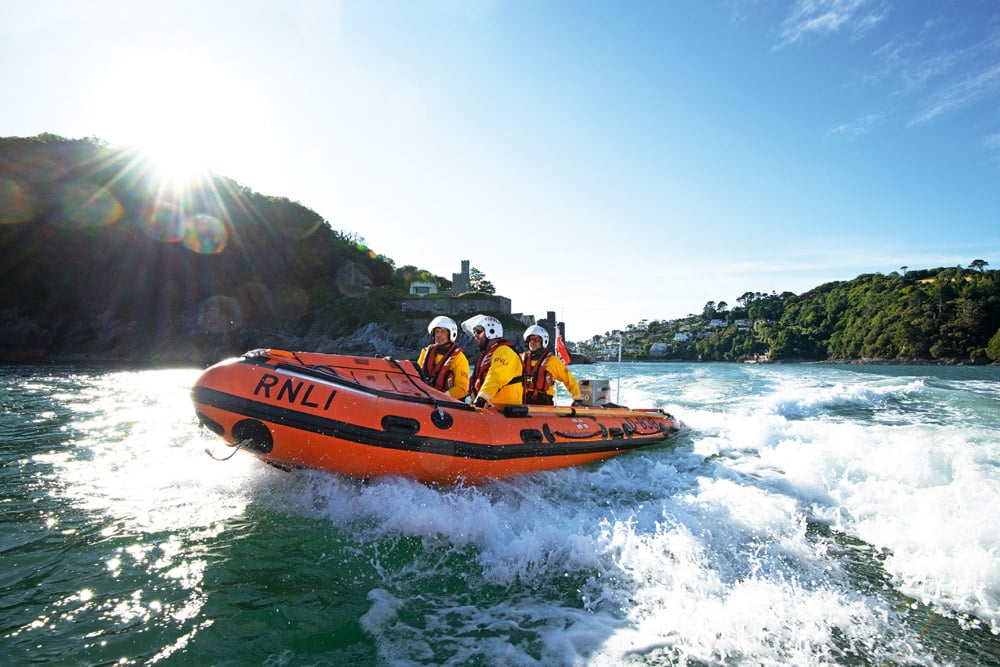
The inflatable lifeboat advantage
Without question, the introduction of the inflatable lifeboat 60 years ago transformed the charity’s methods of inshore lifesaving dramatically, almost overnight. These craft became ‘game-changers’, especially in a rescue scenario where time was of the essence. (It must be remembered that six decades ago, the likes of the Oakley and the Watson all-weather class lifeboats, the mainstays of the RNLI’s fleet, had a top speed in the region of 8 to 10 knots.) Not only could a casualty now be reached in record time, but the inflatable’s shallow draught, along with the manoeuvrability afforded it by its tiller outboard steering, meant accessing hazardous shorelines was far more achievable too. Little wonder why this new breed of lifeboat, duly categorised D and C, grew in popularity to become, in a short space of time, a fleet of highly effective and valuable rescue boats, working alongside the RNLI’s all-weather lifeboats.
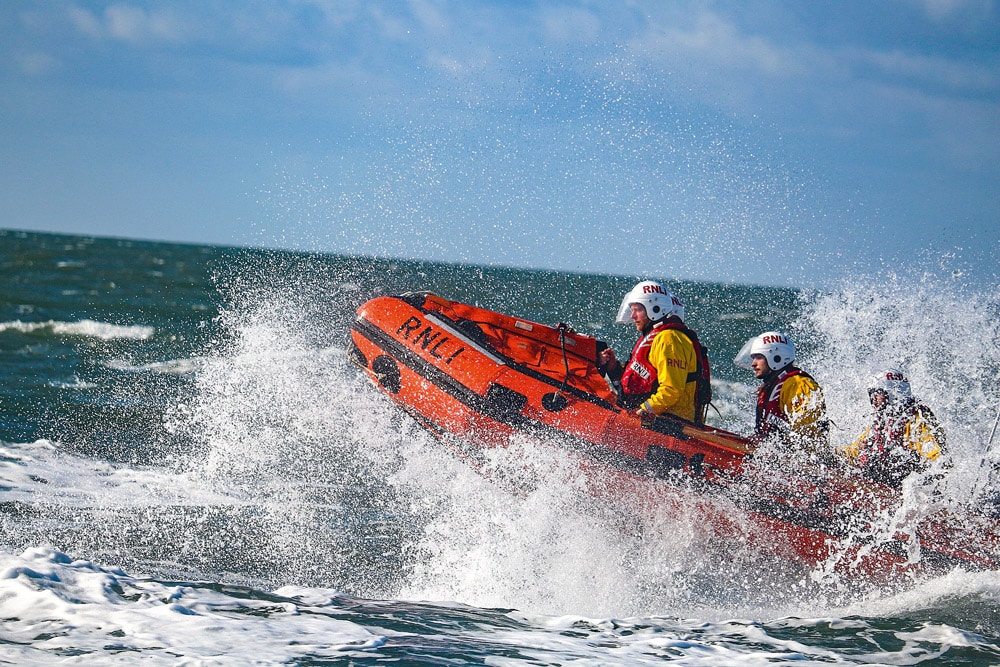
The hard-hull element
As has already been well documented here in PBR, during the late 1960s and early 1970s, men like Frank Roffee, Tony Lee-Elliott, Dag Pike and John Caulcott all played a part in developing inflatable technology further, specifically in regard to the concept of adding a rigid hull to an inflatable collar. Around this same time, Admiral Hoare of Atlantic College in Wales was chiefly responsible for bringing the concept of the rigid inflatable rescue boat to the attention of the RNLI. In due course, the Atlantic 21 RIB was officially born and, as a consequence, inflatable technology had taken another substantial leap further.
Today, the RNLI’s inshore lifeboat fleet consists of the Atlantic 85, D Class, E Class and the inshore rescue boat. Since joining the RNLI’s fleet in 1963, the charity’s inshore lifeboats have extended the Institute’s lifesaving capability around the coast massively, aiding 154,192 people and saving 30,778 lives. (Statistics taken from 1963 to 2nd May 2023 include lifesaving statistics from the RNLI’s Atlantic 85, D Class and E Class lifeboats, plus launches of daughter craft from the RNLI’s all-weather lifeboats and models of inshore lifeboats that are no longer part of the RNLI fleet.)
Aberystwyth, Gorleston, Redcar and Wells were the first stations to receive inshore lifeboats. This was followed by trials at points along the coast between established lifeboat stations at Mudeford, Southwold, West Mersea and Whitstable. An inshore lifeboat has remained at these eight stations since this introduction in 1963, but today’s D Class inshore lifeboats can carry up to three crewmembers and are powered by a single 50hp outboard engine. On-board equipment includes both fitted and hand-held VHF radios, night-vision equipment and first-aid kit, including oxygen.
Testimonies
Simon Ling, RNLI Head of Lifeboats, told PBR: ‘For the last 60 years, inshore lifeboats have enabled our lifeboat crews to reach areas close to shore and in shallow water to rescue people in trouble. These fast and highly manoeuvrable lifesaving craft answered the need for a quicker and more agile response to rescues in areas of water that were more challenging to the larger and slower all-weather lifeboats.
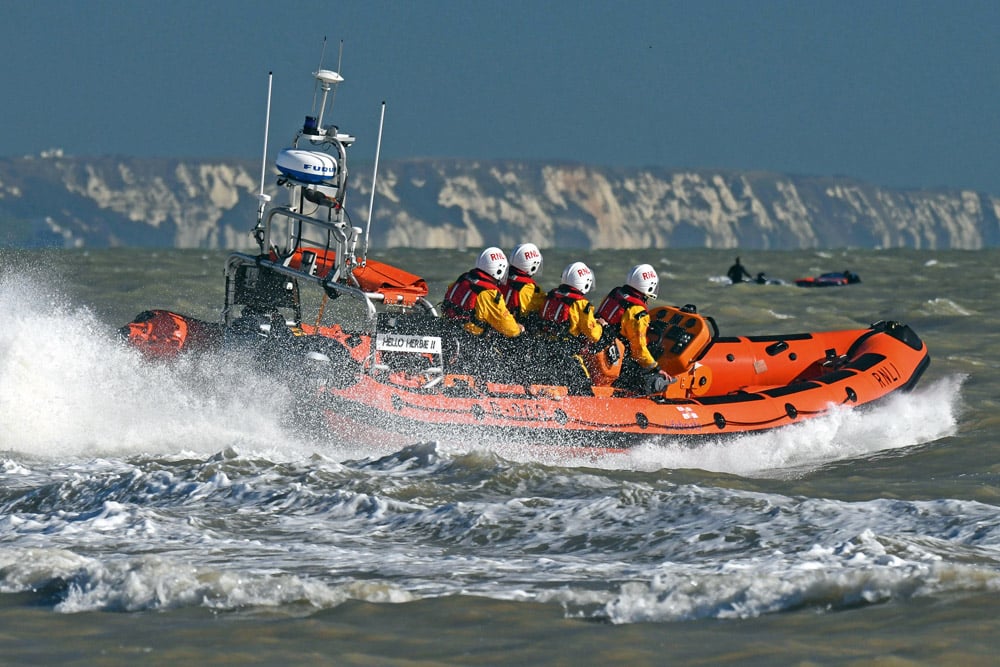
RNLI Rye Harbour B-900 © Stephen Duncombe
‘A huge proportion of our lifesaving effort is undertaken less than 10 nautical miles from the shore, and as such, the unique features and capabilities of our inshore lifeboats have made a huge difference to the efficiency and effectiveness of our 24/7 search and rescue service. As we move towards 200 years of lifesaving, we must continue to evolve so we are fit for the future and sustain our world-class lifesaving service.’
There are currently 106 lifeboat stations that operate an Atlantic 85 lifeboat, 110 that operate a D Class boat, two stations on the River Thames with an E Class craft and five stations with an inshore rescue boat.
In 2021, an Atlantic 85 lifeboat was introduced at Margate RNLI to replace its Mersey lifeboat. It operates alongside their existing D Class inshore lifeboat in providing lifesaving assets catering for busy beaches with frequent tidal cut-offs, inflatable rescues, medium-sized tow jobs and searches for missing water users.
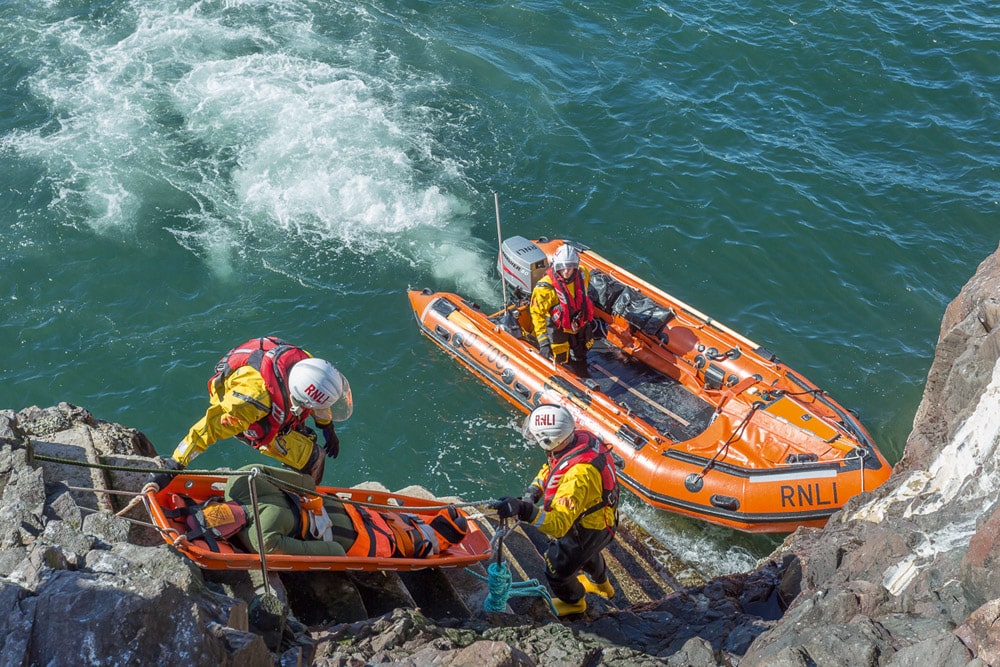
Working off cliff-face in shallow waters. © Nick Mailer Photography
Derek Amas, volunteer Lifeboat Operations Manager at Margate RNLI lifeboat station, said: ‘Our volunteer crew at Margate have worked hard to integrate the Atlantic 85 into our lifesaving capability to work alongside the D Class and continue to support the community and visitors to the area. There have been many occasions when without the D Class and Atlantic 85 at Margate, some people wouldn’t be alive today.
‘When the change of lifeboat took place a couple of years ago, sadly it meant I could no longer operate in a seagoing role. But I am enjoying my new volunteering position as station manager, and we have welcomed many new people to the team at Margate. We look forward to continuing saving more lives with our lifeboats.’
Cullercoats RNLI volunteer helm Anna Heslop likewise stated: ‘We have an Atlantic 85 lifeboat at our station, and it is an incredible craft that has helped the Cullercoats volunteers to aid and save lives since 2007. As RNLI volunteers, we receive world-class training to maintain our lifesaving and boat-handling skills, including capsize training in our Sea Survival Pool.’
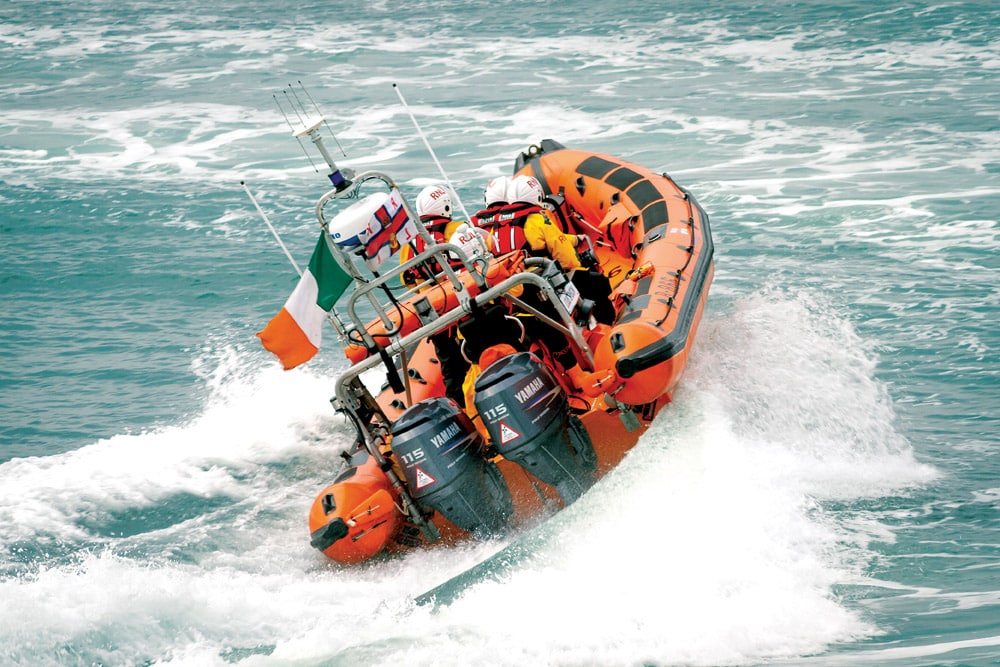
Skerries RNLI B-866
In-house advantages of the RNLI
The RNLI builds and maintains most of its inshore lifeboats in-house at their Inshore Lifeboat Centre in Cowes on the Isle of Wight. This allows the charity to have greater control over costs and quality, ensuring they produce the best lifesaving asset for their crews and spend their supporters’ donations in the most efficient and effective way.
Just as we have seen in the leisure RIB market, advancements in marine technology will continue to influence RIB design and manufacturing processes in the commercial and lifesaving sectors too. Progressively intuitive navigation systems, advancements in casualty dedication technology, enhanced marine communication systems, lighter, more powerful engines, stronger, more lightweight ‘greener’ hull composites, plus, of course, the more widespread use of personal locator devices (PLBs, EPIRBs, etc.), all such factors will no doubt drive the development of inflatable boat technology and the role it performs within the rescue services and, in particular, the RNLI even further. What will the next chapter in these unique craft bring us, I wonder?
The rise of the RIB lifeboat
The current generation of B Class lifeboat is called the ‘Atlantic 85’ – named after Atlantic College in Wales where these rigid inflatable lifeboats were first developed. The ‘85’ represents its length – nearly 8.5m. The lifeboat is both day and night capable and can operate in weather up to a Beaufort force 7.
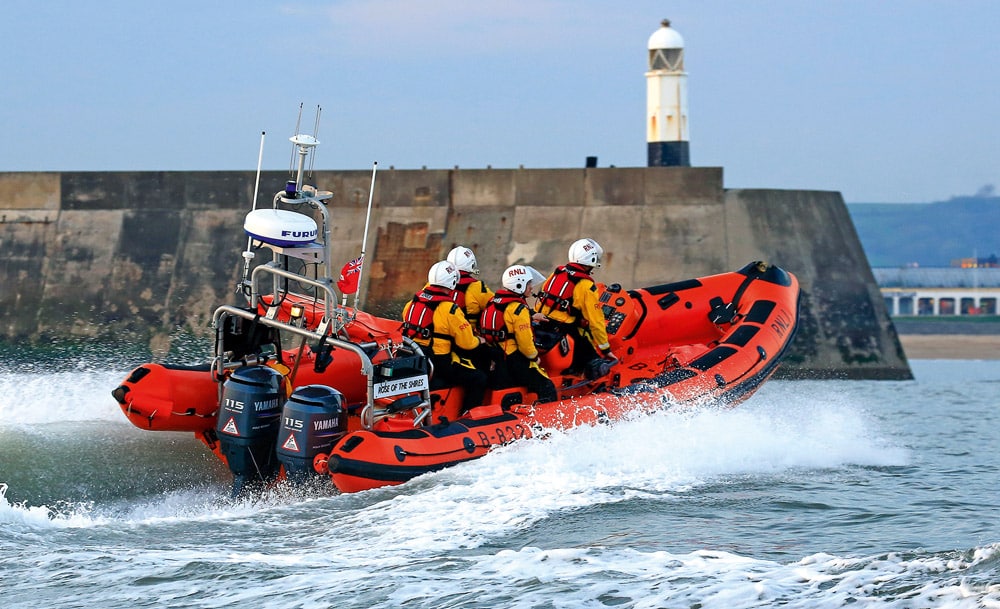
Porthcawl Atlantic 85. – B832 Rose of the Shires.
There have been three generations of B Class lifeboat. The first one was the Atlantic 21, the first RIB to join the RNLI fleet. It served from 1972 until 2008. The Atlantic 21 was then replaced by the Atlantic 75, which was in service from 1993 until 2022. It has now been replaced by the Atlantic 85, which was introduced to the fleet in 2005.
The introduction of the first RIB – the Atlantic 21 – into the RNLI fleet back in 1972 revolutionised lifesaving at sea. The speed, manoeuvrability, agility and versatility of these RIBs dramatically improved the efficiency and effectiveness of the RNLI’s search and rescue service. All three generations of Atlantic lifeboats have helped the charity to save thousands of lives at sea.
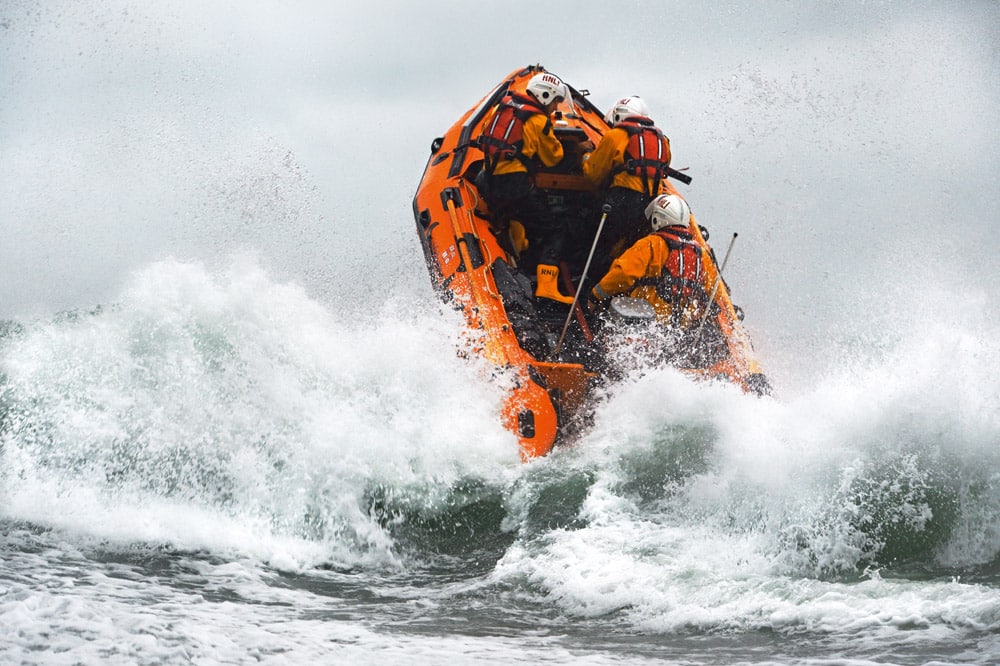
St Agnes D-class inshore lifeboat Blue Peter IV D-641 heading through a breaking wave. © Nigel Millard
When it comes to responding to a lifesaving task, the Atlantic 85 lifeboat is one of the fastest in the fleet: her top speed is 35 knots powered by two 115hp 4-stroke engines.
The determined D Class
With a top speed of 25 knots, the D Class lifeboat can operate in both day and night with an endurance of three hours at sea. As an inflatable inshore lifeboat, the D Class is designed to operate close to shore in shallower water. Despite being the RNLI’s smallest lifeboat, the D Class saves more lives than any other class of craft. The latest generation of D Class lifeboats, known as the ‘IB1 type’, was introduced in 2003 and boasted improved speed, manoeuvrability and equipment.
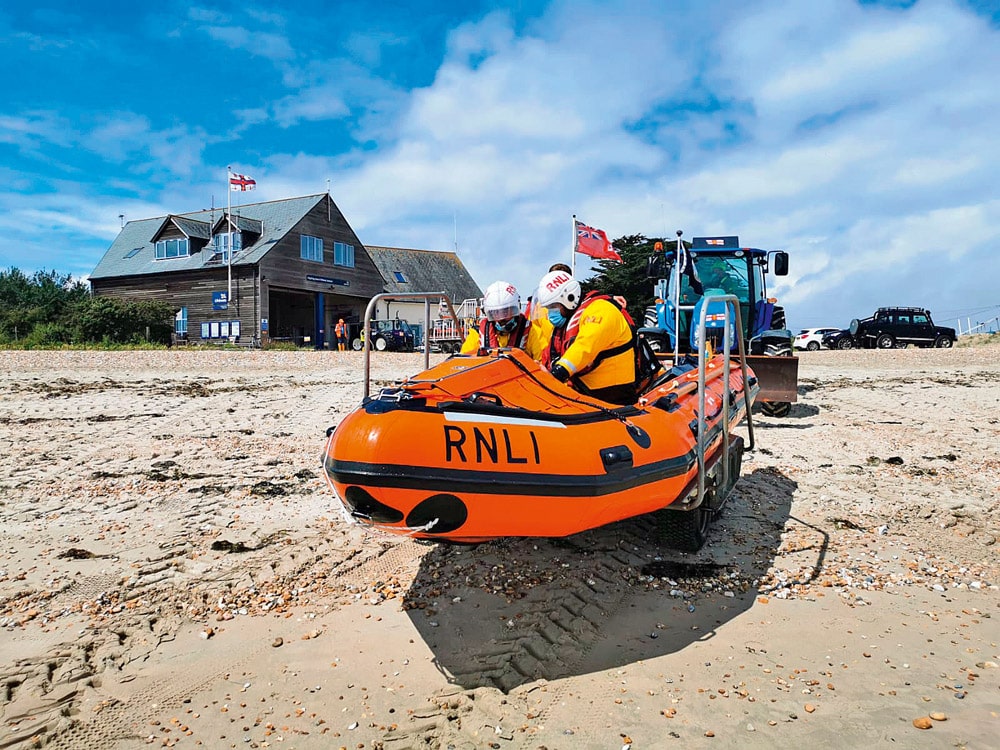
D-Class recovery at Hayling Station.
The eager E Class
With its powerful tidal currents, submerged debris and heavy traffic, the River Thames can be incredibly dangerous for those on and by the water and the E Class lifeboat was designed to handle these river conditions.
Stationed at the RNLI’s two busiest lifeboat stations, Tower and Chiswick, the first generation of E Class lifeboats – the Mk1 – was introduced into the fleet in 2002.
Over 21 years since its formation, Tower has saved 381 lives over its 10,000 shouts. Read more about this milestone.
The latest E Class lifeboat is capable of a top speed of 40 knots, making her the fastest lifeboat in the RNLI fleet.
Water jets give the E Class lifeboat excellent manoeuvrability in the rapidly moving river flow. The E Class is the first modern lifeboat propelled by water jets rather than propellers, allowing her to operate in shallow waters and giving greater control when alongside other craft and in confined waters.
The first ‘shout’
The first lifesaving service performed by an inflatable inshore lifeboat crew was on 3rd June 1963 when Aberystwyth volunteers rescued three people and their dog who had been cut off by the tide.
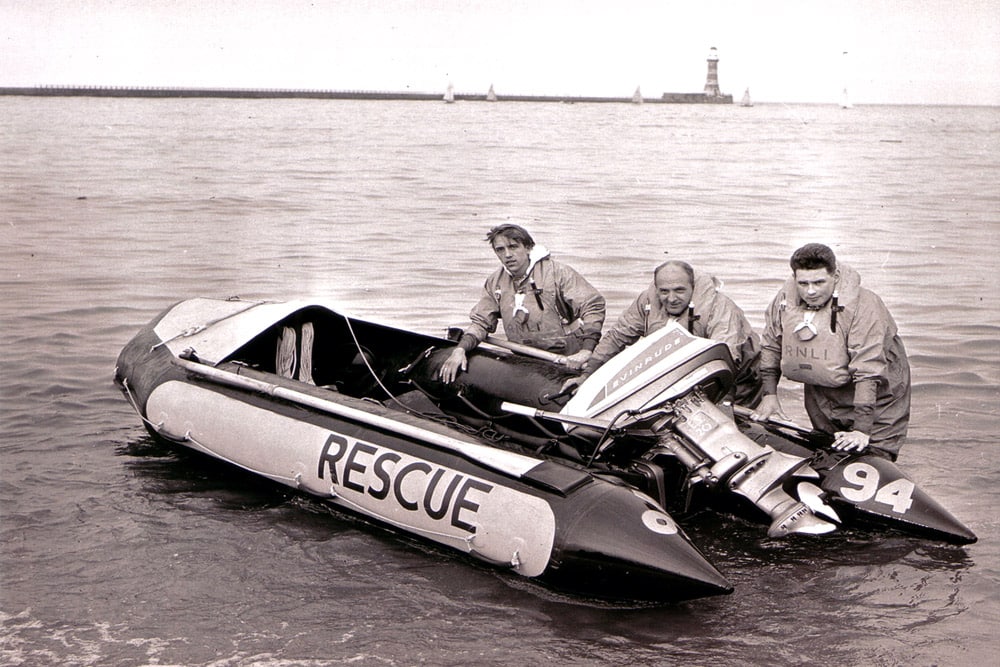
Sunderland Inshore Rescue Boat No 94. Taken in 1966, the year it went into service. Author – Paul Nicholson
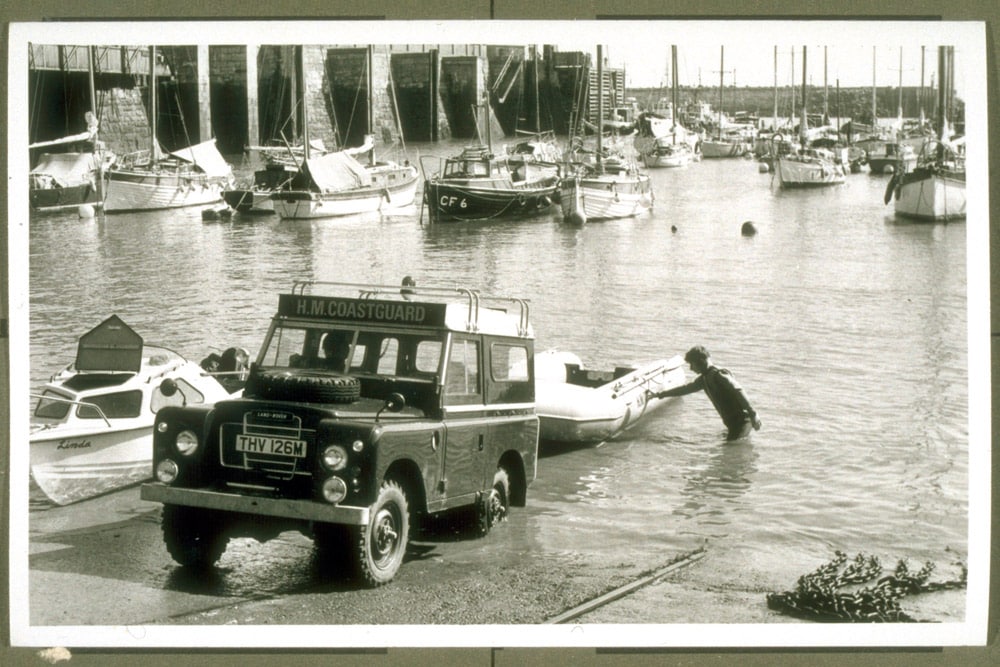
Barry Dock inshore lifeboat being lauched off back of H M Coastguard Land Rover
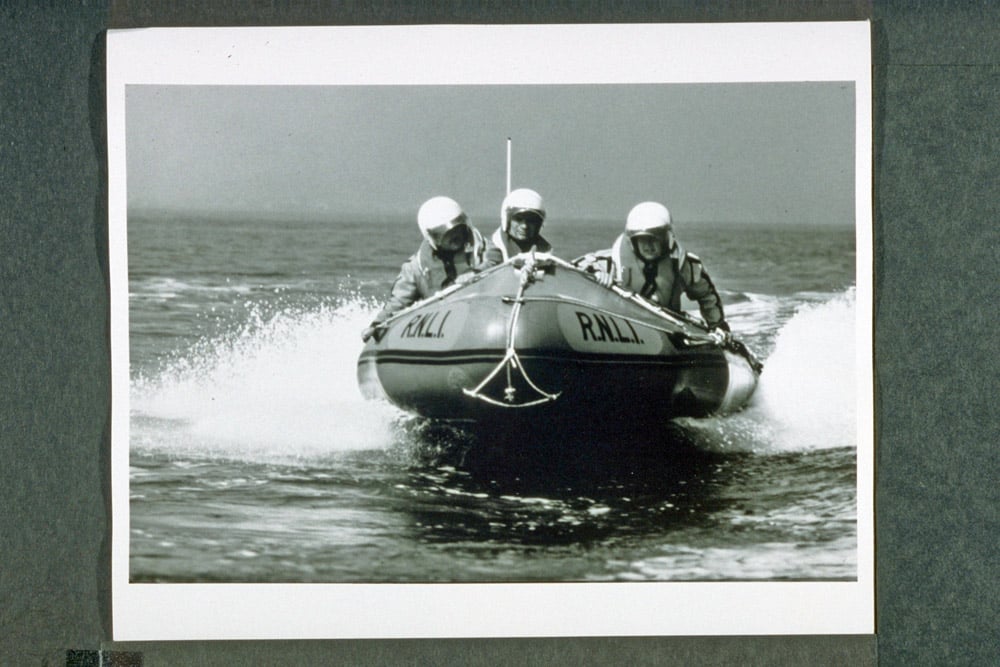
Cleethorpes Inshore lifeboat with 3 crew

